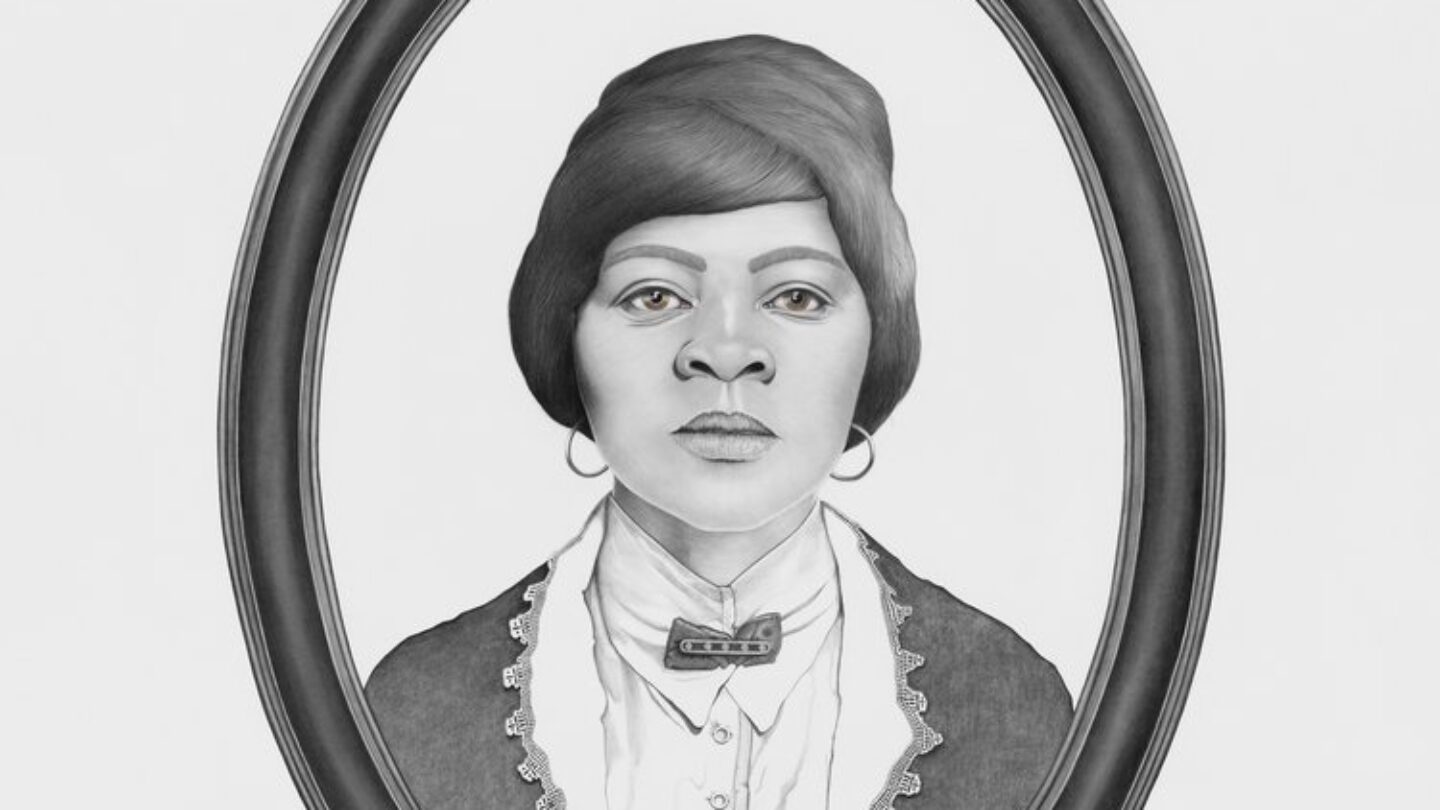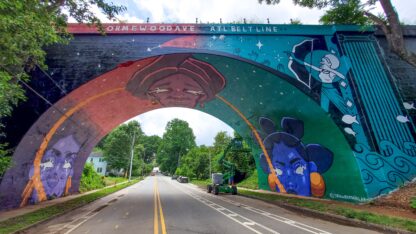The contemporary visual artist Lava Thomas centers her work around Black history, both personal as well as national. Her pieces are inspired by visibility, healing and empowerment in the face of erasure. Thomas’ new exhibition, “Homecoming,” at the Spelman Museum of Fine Art focuses on very lifelike pencil-drawn portraits. “Homecoming” brings together three different bodies of her work for the first time in one show, spanning nearly a decade of drawings. Lava Thomas joined “City Lights” host Lois Reitzes via Zoom to talk about her new exhibition.
Interview highlights:
“Mugshots,” portraits of women in the Montgomery bus boycott after Rosa Parks’ civil disobedience:
“One of the women, Joanne Robinson, actually initiated the Montgomery bus boycott,” Thomas said. “She was an English professor at Alabama State College and also president of the Women’s Political Council after Rosa Parks was arrested. She and two associates mimeographed over 50,000 handbills, and she did this at the college where she worked, risking her job. They distributed those hand bills all over Black Montgomery in churches, beauty shops, stores, and that one-day boycott was so successful that all of Black Montgomery came together and decided to extend the boycott, and elected Dr. Martin Luther King Jr. to be the leader of it.”
“I was doing research on another project, actually about activism in American women, when I came upon mugshots of well-dressed women and men that were a part of the group of the famous mugshot with Rosa Parks, and I was immediately struck by the fact that I didn’t know who these other people were,” Thomas recounted. “I chose mugshots, in particular, because I wanted to transform the moment that the women were being criminalized by the photographer that was taking their mugshot portrait. I wanted to transform that mugshot into a site of honor and commemoration, and tell the story of their bravery and their sacrifice at that moment.”
On choosing pencil drawing as a medium with symbolic significance:
“The mugshots themselves, many of them are out of focus, and some of them also have stains and tears from age,” Thomas said. “I chose to draw the portraits instead of creating paintings, because we all have experience with pencil on paper. So in that way, the medium of it is accessible, but it’s also a metaphor for the ‘eraseability’ of this history. Pencil on paper is easily erased, and drawings themselves require a system of conservation in order to preserve them. They have to be framed. They have to be kept out of direct sunlight, and they also have to be kept in a temperature-controlled environment. So that entire support system for conservation really speaks to the way that this history must be preserved.”
On the collection “Looking Back and Seeing Now:”
“I was searching for sheet music — my grandmother had been a church pianist and choir director — I came upon her photo album, and it was a complete surprise, because we had already gone through, or so we thought, all of her things after she died. So I came upon this album, which was obviously old, and when I opened it, it was so old in fact, that it was literally falling apart. And the first portrait that I laid my eyes on was of a woman whose gaze was so intense that I knew immediately that I needed to build a body of work around that discovery and around her.”
“There are two large-scale portraits. Both are six feet square, of women who I believe are my ancestors, as well as two smaller portraits of women who I believe are my ancestors, and I believe that they’re my ancestors because they each were in a prominent place in my grandmother’s photo album,” Thomas explained. “They’re drawn within a drawn oval frame to mimic the oval shape that the studio photographs employed when their photos were originally taken. And I say that I believe that they are my ancestors because there isn’t anyone left alive in my family that can confirm that.”
The exhibition “Lava Thomas: Homecoming” is on view at the Spelman Museum of Fine Art through Dec. 3. More information is available at https://museum.spelman.edu/exhibitions/lavathomas/










